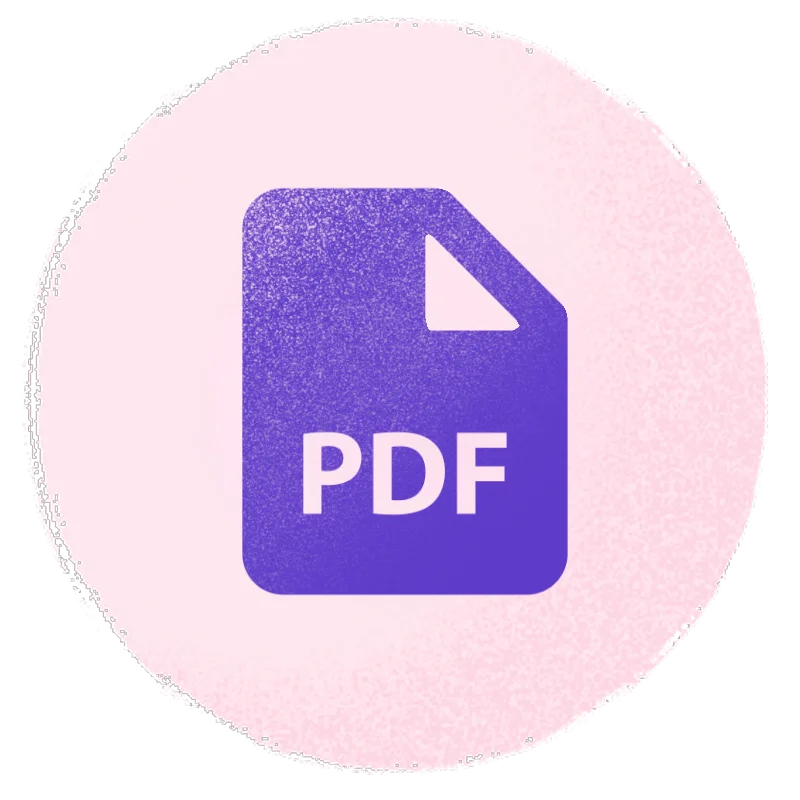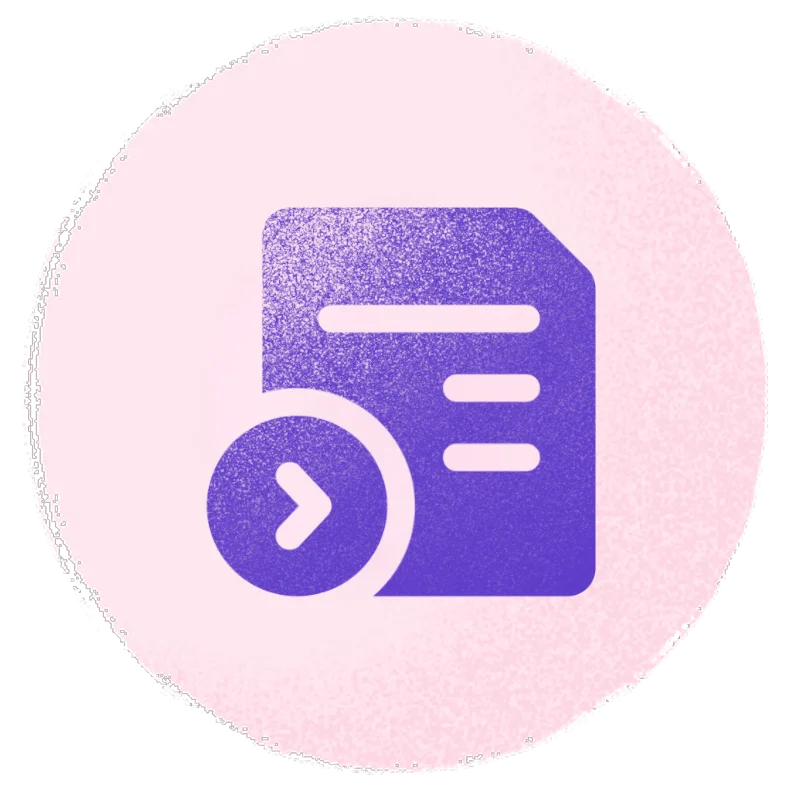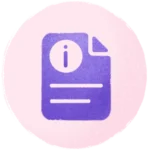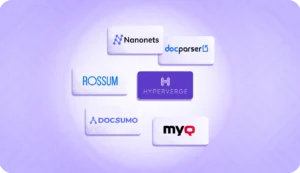Your desk is buried in papers, and the scanners won’t stop buzzing. Every piece of paper needs your attention, and you’re trying to keep up. You flip through the pages, hoping you didn’t miss anything important. The thought of doing it all again tomorrow feels exhausting. Sound familiar?
For many businesses, it’s a daily reality. Despite living in a digital age, large amounts of data are still processed on paper. In fact, about 80% of this data is unstructured—think of handwritten notes, receipts, and forms. Without the right tools, machines struggle to read and analyze this information.
As a result, a lot of this valuable data goes unused. Research from Forrester predicts that 60% to 73% of data remains untapped, gathering dust. But there’s a way out of this cycle.
Organizations can transform data handling by combining Optical Character Recognition (OCR) with Robotic Process Automation (RPA). These technologies reduce the need for manual data extraction and eliminate repetitive tasks for employees.
With RPA OCR, you can extract valuable insights from data that was once locked away in physical documents. This leads to smarter, more effective business operations, and businesses can focus on growth and innovation without worrying about mundane tasks.
Understanding RPA and OCR
RPA refers to the use of software robots, or “bots,” to automate repetitive and rule-based tasks. These tasks could range from data entry and processing to customer service interactions. The primary goal of RPA is to automate mundane, time-consuming activities, allowing employees to focus on more strategic and creative tasks.
In RPA, OCR plays a key role in improving automation by enabling robots to read and extract information from unstructured data. While RPA is excellent for automating rule-based, repetitive tasks, it often relies on structured data.
But what happens when the data is in a scanned document, an image, or a handwritten note? This is where OCR steps in.
OCR in RPA allows automation bots to process data from physical or unstructured formats—like invoices, receipts, contracts, or forms—and turn it into actionable, digital text. With OCR integrated into RPA workflows, businesses can automate end-to-end processes that involve both structured and unstructured data.
This technology is widely used in industries where documents need to be processed at scale, such as finance, healthcare, and logistics.
For example, when an invoice is scanned as a document or image, OCR technology can extract key details like the invoice number, amount, and vendor information. This digital data is then fed into the RPA system, which can automatically organize data, input it into accounting software, trigger payment workflows, or route it for approval.
Studies indicate that businesses integrating RPA with OCR could see up to a 40% reduction in operational costs and a 60% reduction in processing time for tasks like invoice and claims processing.
With RPA OCR capabilities, companies can process large volumes of documents quickly and accurately. This transforms how they handle paperwork and eliminates the need for human intervention in data extraction.
Key Benefits of Integrating RPA with OCR
Integrating RPA with OCR offers numerous advantages that can transform business operations, including:
1. Enhanced Accuracy in Data Processing and Document Management
One of the biggest advantages of combining OCR with RPA is improved data extraction and document management accuracy. OCR technology captures data from scanned documents, images, and handwritten notes, converting it into digital text. This minimizes human error and ensures more accurate data processing and data entry.
For example, Agilent Technologies, a global consumer electronics company, integrated OCR with RPA to automate invoice processing. Before OCR automation, manual data entry was error-prone, resulting in frequent discrepancies. After implementing OCR in their RPA workflows, they reduced the invoice processing time by 50% and increased vendor satisfaction.
2. Improved Speed and Productivity
OCR allows RPA bots to quickly extract relevant data from unstructured documents like invoices, receipts, and contracts, which would otherwise require hours of manual entry. Once extracted, RPA handles the rest of the workflow, automating tasks like data input, approval routing, or reporting.
Vodafone, for example, used AI-enhanced OCR in automation to transform its procurement process. Previously, a team of 10 workers spent three to four weeks each month compiling information on purchase orders, approval rates, and trends. This manual process was time-consuming and inefficient.
After implementing their new supply chain analytics control system, Vodafone automated data extraction from procurement documents and reports.
As a result, the company achieved a 96% perfect purchase order rate, drastically reducing the time spent compiling reports. What used to take weeks now happens seamlessly and in a fraction of the time.
3. Better Accessibility and Customer Satisfaction
OCR and RPA enhance data accessibility, making it easier for employees to retrieve and act on critical information. For customer-facing industries, this means faster response times and improved service delivery.
With over 15% of the global population living with a disability, businesses can provide accessible services that can be used by everyone, regardless of physical or cognitive limitations. By automating data extraction and processing, companies can ensure that information is easily accessible to employees, allowing them to serve customers better and resolve issues more efficiently.
4. Reduction of Manual Workload and Operational Costs
Manual data entry, processing, and extraction can be costly and time-consuming. By implementing RPA with OCR, businesses can significantly reduce expenses related to staff handling data extraction, copying, printing, and other administrative tasks.
Automation eliminates manual intervention, allowing employees to focus on higher-value tasks such as customer engagement or strategic decision-making. This shift not only lowers labor and operational costs but also reduces errors and inefficiencies, leading to improved productivity across departments.
5. Improved Compliance and Audit Readiness
Compliance is critical for industries like finance, healthcare, and insurance, where adhering to regulations is a legal requirement and critical for maintaining trust and operational integrity.
In the finance sector, for example, compliance breaches can result in hefty fines—often reaching millions of dollars—along with reputational damage and loss of business. In fact, federal banking regulators can impose anti-money laundering penalties ranging from $5,000 per violation to $1,000,000, or 1% of a financial institution’s assets—whichever amount is greater—for each day the violation continues.
In 2017, Equifax suffered a massive data breach affecting 147 million people. The breach was caused by vulnerabilities in the company’s outdated systems and inefficient data management practices, including failure to monitor and protect sensitive customer data properly. The breach resulted in a $700 million settlement and severely damaged Equifax’s reputation and customer trust, showing how poor data management and compliance practices can lead to catastrophic consequences.
By integrating OCR with RPA, businesses can ensure that data is captured accurately and stored in a structured, easily accessible digital format. This automation simplifies compliance by reducing the risk of human error and ensuring that all data is properly documented and ready for audit. As a result, companies can more easily adhere to regulations, improve audit readiness, and minimize the costs associated with non-compliance.
Real-World Use Cases
OCR and RPA can be combined to achieve efficiency across functionalities in various industries. Here are some examples of RPA with OCR integration.
Banking and Financial Services
Managing loan applications involves handling large volumes of paperwork, including financial statements, identity proofs, and credit histories. Traditional processes often involve repetitive tasks like data extraction, entry, and verification, which are prone to delays and errors.
With RPA and OCR integration, banks can automate loan application processing. OCR extracts critical information from scanned documents, such as applicant details and income data. RPA then enters this data into the loan processing system and validates it against predefined criteria.
For instance, the system flags missing documents or inconsistencies in real time, reducing processing delays. This approach speeds up approvals and ensures compliance with regulatory standards.
Home Credit India, part of Home Credit Group, performed all checks manually for onboarding merchant partners or dealers. This required a lot of time and human effort. After partnering with HyperVerge, the company witnessed a 3-4x increase in business volumes in less than two months, aligned with 50% reduced error rates.
Healthcare
In healthcare, maintaining accurate and up-to-date patient records is essential but often labor-intensive. Clinics and hospitals handle diverse forms like admission sheets, diagnostic reports, and prescriptions, which can be handwritten or printed.
By leveraging intelligent document processing, OCR extracts patient information from these documents, such as names, medical histories, and test results. RPA then automates the data entry into electronic health record (EHR) systems, ensuring consistent and accurate records.
This streamlining of patient record management reduces administrative workload and allows healthcare staff to focus on patient care.
For example, a healthcare provider can automate insurance claim pre-approvals by integrating RPA and OCR. This ensures that critical patient information is quickly extracted and processed without manual intervention.
Insurance
Insurance companies often face challenges in managing claims due to the sheer volume of documents, including claim forms, policy agreements, and supporting evidence like invoices or photos. Traditional methods involve significant manual effort, leading to delays in claims settlement.
RPA with OCR integration in insurance shows how automation simplifies claims processing. OCR extracts relevant details from scanned forms, such as policy numbers and claim amounts. RPA then validates the data against existing records, checks for eligibility, and routes the claim for approval.
For instance, if the policy covers the claimed incident, RPA triggers the following steps automatically, ensuring faster settlements.
Similarly, automation improves operational efficiency and minimizes errors, leading to better customer experiences. Companies adopting how to implement RPA OCR solutions often start with claims workflows as they offer immediate value and scalability.
Common Challenges in RPA-OCR Integration
While integrating RPA with OCR can transform business processes, challenges often arise during implementation.
Let’s explore the key issues and solutions for optimal results:
1. Data Quality Issues
OCR relies on clear, high-quality documents to extract data accurately. However, real-world documents often include handwritten notes, blurry scans, or inconsistent formatting. Poor data quality leads to errors in extraction and creates additional manual tasks to fix inaccuracies.
AI-enhanced OCR can address these issues using machine learning to improve text recognition. Advanced systems identify patterns and adapt to variations, reducing errors even in low-quality documents. Regularly auditing document quality and training OCR models with diverse datasets further minimizes issues.
2. Compatibility with Legacy Systems
Nearly two-thirds of businesses operate on outdated systems without the flexibility to support modern automation tools. However, integrating RPA-OCR solutions with legacy systems often requires significant customization, leading to delays and increased costs.
Cognitive RPA technologies bridge this gap by using AI to interact with legacy systems like humans. These tools mimic user actions such as logging in, navigating menus, and entering data, eliminating the need for full system overhauls.
Additionally, middleware solutions can act as connectors, enabling seamless integration.
3. Implementation and Scalability Challenges
Organizations may struggle to scale RPA-OCR solutions due to process complexity or lack of expertise. Initial implementations might work for a few workflows but fail to handle larger operations.
To ensure success with complex projects, follow these best practices:
- Start with pilot projects to identify gaps and refine processes before full-scale deployment.
- Collaborate with experienced vendors or consultancies specializing in RPA and document processing.
- Regular updates and system evaluations ensure the integration grows with your business needs.
Tackling these challenges with the right strategies allows businesses to fully harness the power of RPA-OCR integration, driving efficiency and long-term success.
How to Integrate RPA and OCR to Improve Your Workflows?
Integrating RPA and OCR involves a structured approach to achieve seamless and efficient workflows. Here’s a step-by-step guide to get it right:
Step 1. Identify Suitable Processes
The first step is to identify document-intensive and repetitive tasks. These tasks often require significant time and human resources.
These tasks include:
- Processing invoices
- Handling customer claims
- Managing HR documentation
- Organizing legal contracts
These processes are ideal for automation because they involve high volumes of data extraction and manipulation.
Step 2. Assess Your Technology Landscape
Evaluate your current systems to understand their readiness for RPA and OCR integration. Ensure your infrastructure supports modern tools or determine if additional enhancements are needed for compatibility.
This could involve updating existing platforms, enhancing your IT infrastructure, or using middleware to bridge the gap.
- Evaluate OCR Capabilities: Choose the best OCR software (like HyperVerge) that matches your document processing needs. Look for features like support for multiple file types, high accuracy, and adaptability to low-quality or handwritten text. AI-enabled OCR provides advanced capabilities for complex scenarios.
- Select RPA Tools: Choose an RPA tool that integrates smoothly with your OCR system. The best RPA platforms offer drag-and-drop interfaces for building automation workflows, scalability for handling large volumes, and flexibility to adapt to a variety of tasks. Ensure the RPA tool you choose has pre-built capabilities for handling document processing tasks, which will significantly speed up the implementation process.
Step 3. Define Data Extraction Workflows
Once you’ve selected the appropriate tools, define the workflows for how data will be extracted, validated, and processed. This involves detailing how the OCR will capture information from documents (e.g., invoices, forms, contracts), and how the RPA will handle the extracted data.
For instance, OCR might extract invoice amounts, dates, and vendor details, while the RPA bot processes this information by verifying it in a financial system, storing it, or forwarding it to other departments.
Mapping out these workflows ensures all process steps are automated and streamlined.
Step 4. Leverage AI for Intelligent Automation
Use AI to enhance both OCR accuracy and RPA capabilities. With AI, you can:
- Enhance the accuracy of OCR by learning from errors and making adjustments over time. This improves data extraction even from difficult-to-read documents.
- Help RPA bots to make decisions based on the extracted data. This allows for more flexible and adaptive workflows.
For example, AI can help the RPA bot recognize when an invoice is flagged for manual review or when an exception occurs, reducing the need for human intervention.
Step 5. Test and Optimize the Integration
Before going live, thoroughly test the entire system to ensure that the OCR and RPA components work together seamlessly. Testing should include checking the accuracy of data extraction, the correctness of the automated tasks, and the overall performance of the integrated system.
This phase is crucial for identifying potential issues, such as missed data or slow processing times.
Once you’ve conducted these tests, you can optimize the system by fine-tuning OCR settings, improving error-handling processes in RPA workflows, and ensuring that both tools work in harmony.
Step 6. Monitor and Maintain
After deployment, monitor the integration to ensure consistent performance. Track key metrics such as processing speed, error rates, and the amount of manual intervention required.
Update your OCR and RPA tools regularly to leverage new features, improve security, and address any bugs or issues. Periodic reviews also ensure that the integration continues to meet your business’s evolving needs.
The Future of RPA+OCR
The future of RPA combined with OCR will focus on advanced intelligent automation. Bots will extract text, understand context, and make decisions. This will enable seamless integration with various systems and more flexible automation across business processes.
As businesses demand more efficient workflows, this combination will shape the future of automation by becoming more intelligent, adaptive, and versatile. Here’s what lies ahead:
1. Increased Adoption of AI-enhanced OCR
Traditional OCR systems can only handle structured data. However, AI-enhanced OCR will change this by understanding unstructured and semi-structured documents. These systems will recognize complex layouts, extract data accurately, and understand context.
For example, invoices with different designs or handwritten notes will no longer be challenging. This advancement will make intelligent character recognition more reliable.
2. Advanced Cognitive RPA
RPA will increasingly integrate cognitive capabilities like natural language processing (NLP) and machine learning. This will enable bots to interpret, analyze, and make decisions based on data extracted by OCR.
Instead of simply executing predefined workflows, future RPA solutions will handle exceptions and adapt to dynamic scenarios. Businesses will see workflows that are not only automated but also smart enough to learn and evolve.
3. Expansion Beyond Traditional Use Cases
While RPA and OCR already excel in industries like banking, healthcare, and insurance, their applications are set to expand further.
In retail, they’ll streamline inventory management by automating the extraction of stock data from delivery receipts. In logistics, they’ll enable faster document processing for shipping and customs.
These advancements will lead to innovative applications across every sector.
4. Integration with Cloud and Edge Computing
As businesses shift to cloud and edge computing, RPA OCR will adapt to these environments. Cloud-based solutions will allow scalable and cost-efficient deployment of automation tools.
Meanwhile, edge computing will enable real-time data extraction and processing closer to the data source, reducing latency and improving response times.
For identity verification (IDV), cloud-based systems will support high-volume document processing during onboarding surges, such as festival sales or large-scale events. Edge computing will enable real-time verification, offering faster and more secure identity checks.
5. Focus on Hyperautomation
The future of RPA and OCR lies in hyperautomation—a strategy that combines multiple automation technologies to create more comprehensive and intelligent workflows.
Businesses will automate entire end-to-end processes by integrating RPA, OCR, AI, and analytics. This shift will drive significant growth in the global hyperautomation market, expected to reach $26.9 billion by 2027, growing at a CAGR of 23.1% from 2022 to 2027.
In IDV and onboarding, this integration can perform tasks such as:
- Extracting data from identity documents with OCR.
- Comparing extracted data against watchlists or databases using RPA.
- Analyzing customer behavior patterns with AI for enhanced fraud detection.
This combination of technologies will enable businesses to reduce manual work, accelerate processes, and improve customer satisfaction.
6. Democratization of Automation
The rise of user-friendly platforms will make RPA OCR accessible to non-technical users. Businesses will empower employees to create their own automation workflows without extensive coding knowledge.
This democratization will lead to widespread adoption across small and medium-sized enterprises, driving innovation at every level.
7. Digital Identity Management
RPA OCR will play a critical role in the future of digital identity verification. As digital interactions grow, businesses will rely on automation to authenticate users remotely.
By integrating OCR with biometrics, such as facial recognition, organizations can ensure secure and compliant onboarding for financial services, healthcare, and other sensitive sectors.
Automate Your Document Processing With AI-powered OCR
AI-powered OCR is redefining how businesses manage digital documents, making processes faster, more accurate, and more secure. By automating data extraction with AI, OCR minimizes errors and enhances efficiency. Combined with RPA, it accelerates workflows and safeguards against fraud by verifying document authenticity in real-time.
HyperVerge provides an AI-powered OCR solution with advanced tools that seamlessly integrate with your existing systems, delivering unparalleled value:
- Achieve over 90% accuracy on diverse document types, from ID cards to bank statements.
- Effortlessly process structured and unstructured data with adaptive capabilities.
- Operate globally with support for 150+ languages.
- Get up and running in as little as four hours.
- Ensure top-notch data protection with encryption and a full audit trail.
HyperVerge’s OCR solution delivers high accuracy along with scalability, ensuring your document processing capabilities can grow with your business. This makes it perfect for companies looking to expand globally while maintaining high security and efficiency standards.
Take the first step toward smarter document management. Sign up for free today!
FAQs
1. What added advantage does an RPA integrated with OCR technology bring?
Integrating RPA with OCR allows businesses to automate processes involving unstructured data. OCR extracts text from documents like invoices and forms, while RPA automates actions such as entering data into systems or triggering workflows. This reduces manual work, cuts errors, speeds up processes, and improves compliance by ensuring accurate and seamless data handling.
2.What is OCR in RPA?
OCR in RPA enables bots to read and extract text from unstructured documents (e.g., scanned forms, invoices). RPA then uses the extracted data to automate tasks like data entry or updating systems, eliminating manual effort and improving process efficiency.





















